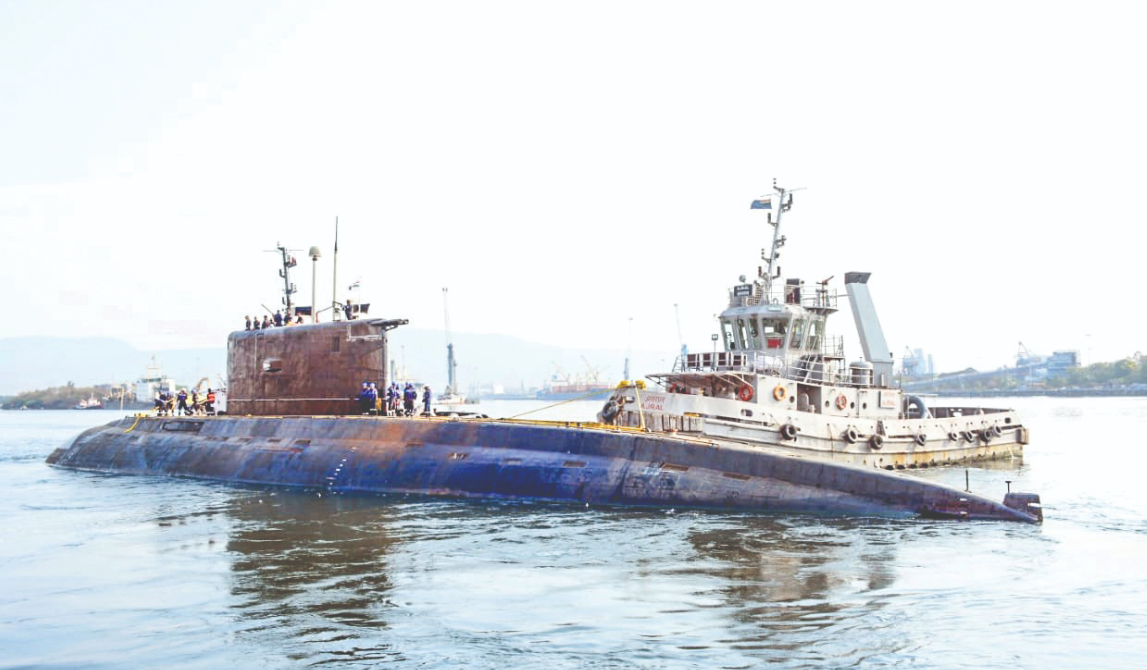India’s two major defense shipyards, Mazagon Dock Shipbuilders (MDL) and Hindustan Shipyard (HSL), have signed a memorandum of understanding (MoU) to accelerate India’s ability to build submarines independently. This strategic cooperation reflects the strategic layout of MDL and HSL to integrate their shipbuilding capabilities.

Under the agreement, MDL and HSL will jointly undertake submarine projects, with HSL responsible for providing outfitting technology, which will significantly shorten the construction cycle and optimize resource allocation for India’s submarine construction projects.
Indian media reported that India previously relied on a single shipyard to build submarines, and regarded it as a limiting factor in submarine construction capacity and delivery cycle, making it impossible for Indian shipyards to meet the strategic needs of the Navy for about 20 submarines. The “dual shipyard” model of MDL and HSL combines the shipbuilding technologies of the two shipyards, which has significant strategic advantages.
With the two shipyards reaching a cooperation agreement, the Indian government believes that this move will be able to efficiently meet the strategic needs of the country’s navy, overcome previous capacity constraints, and maintain continuous operations and strategic flexibility.
Expanding production capacity, MDL’s new plant can accommodate aircraft carriers
It is understood that MDL is a traditional submarine manufacturer in India, and the shipyard is promoting a capacity expansion plan. Specifically, MDL plans to expand two new factory areas named South Yard Anne and Nhava Yard around the existing shipyard, aiming to create a “large shipyard.”
The new shipyard will have India’s largest dry dock, capable of accommodating the Indian Navy’s next-generation aircraft carriers. The new shipyard will utilize solar energy and natural light and comply with the standards of the Indian Green Building Council.
Nhava Yard covers an area of 162,000 square meters and is across the sea from MDL’s existing shipyard. It will build up to 30 buildings including dry berths and workshops, and will be equipped with a giant dry dock that is nearly 600 meters long and 60 meters wide. It can accommodate large ships and is suitable for the construction and maintenance of aircraft carriers and the largest Suezmax tankers and bulk carriers. Nhava Yard will be used for the construction and maintenance of defense and commercial ships. The construction period is 48 months.
With its geographical advantages, HSL plans to transform into a submarine shipyard
Founded in 1941, HSL is India’s second largest shipyard after Cochin Shipyard. It is located adjacent to the shipbuilding center where India’s nuclear-powered submarines are built and the Eastern Naval Headquarters. Due to its location south of Visakhapatnam and its technical capabilities in submarine retrofitting, it has become an important asset.
HSL has three shipbuilding berths and a 550-meter-long outfitting dock. It is currently building support ships and retrofitting submarines for the Indian Navy, playing a key role in India’s maritime defense. It is said to be ready to transform itself into a submarine shipyard.
HSL entered the submarine repair field in the early 1970s and successfully moored and repaired two Egyptian submarines in 1972, laying the foundation for subsequent submarine repairs. Currently, the shipyard is carrying out a routine renovation of INS Sindhukirti.
India promotes the development of its domestic shipbuilding industry to become a “shipbuilding powerhouse”
Currently, India is implementing a “shipbuilding revitalization” strategy, planning to take a major leap forward by leveraging the new global shipbuilding cycle. It aims to become one of the world’s top ten shipbuilding countries by 2030 and the world’s fifth largest shipbuilding power by 2047.
To achieve this goal, India has formulated a long-term strategy and provided various incentives. India is supporting the development of the shipbuilding industry through a variety of policies, including shipbuilding subsidies of up to 30% per year, tariff exemptions on imported materials, and long-term financial support funds. For example, India’s Finance Committee has finalized a 180 billion rupee shipbuilding support plan and allocated 250 billion rupees for the shipbuilding industry in the 2025-2026 federal budget.
At the same time, India is making every effort to attract major global shipbuilding companies (such as HD Hyundai Heavy Industries and Hanwha Ocean) to invest in India to help it build shipbuilding and repair bases.
However, India currently has only 28 domestic shipyards (20 of which are private enterprises), which mainly build small and medium-sized vessels and lack experience in building large ships (such as VLCCs). Its shipbuilding industry is almost “starting from scratch.” With such a weak foundation in the shipbuilding industry, its development will inevitably face enormous difficulties.


